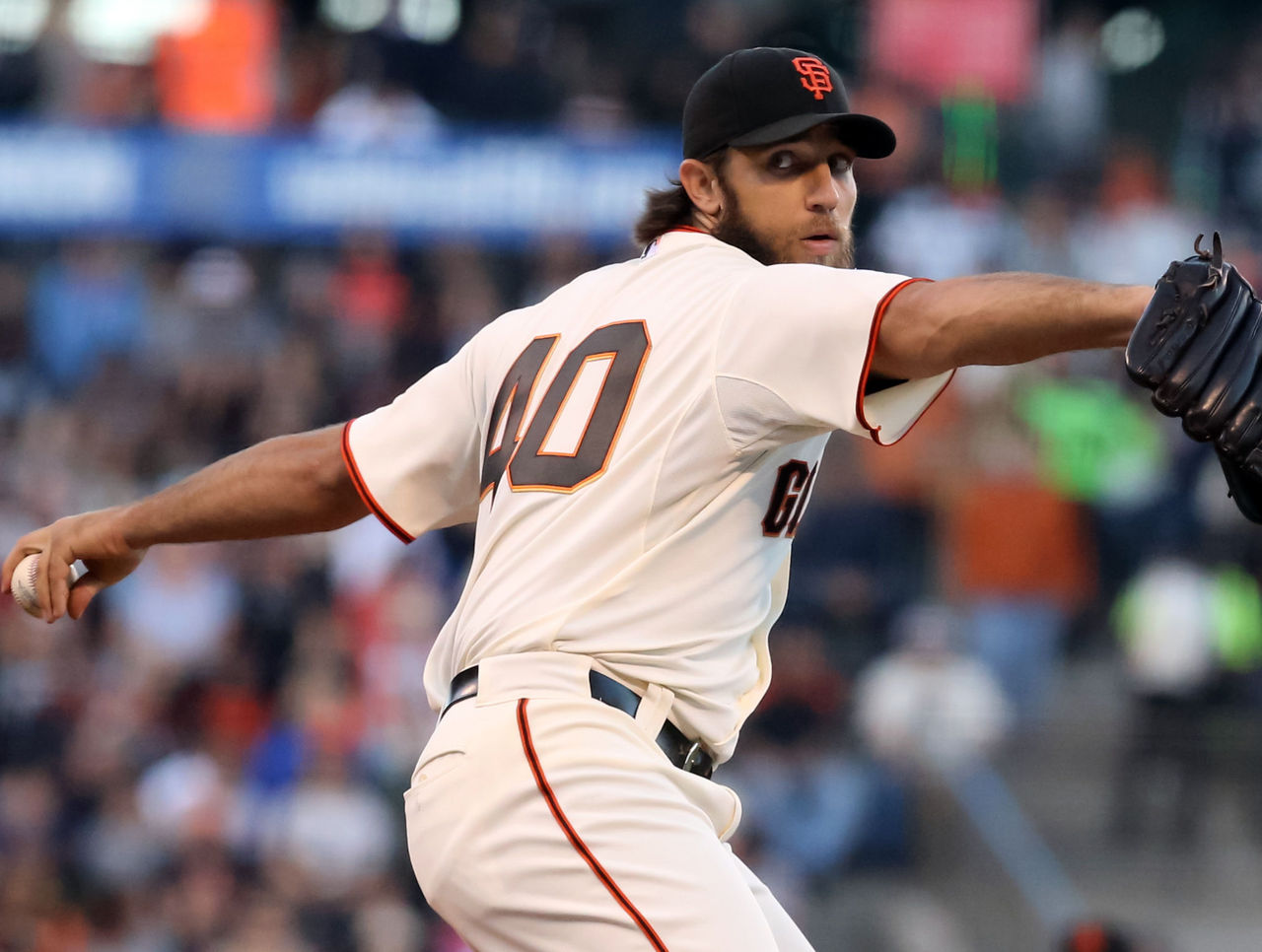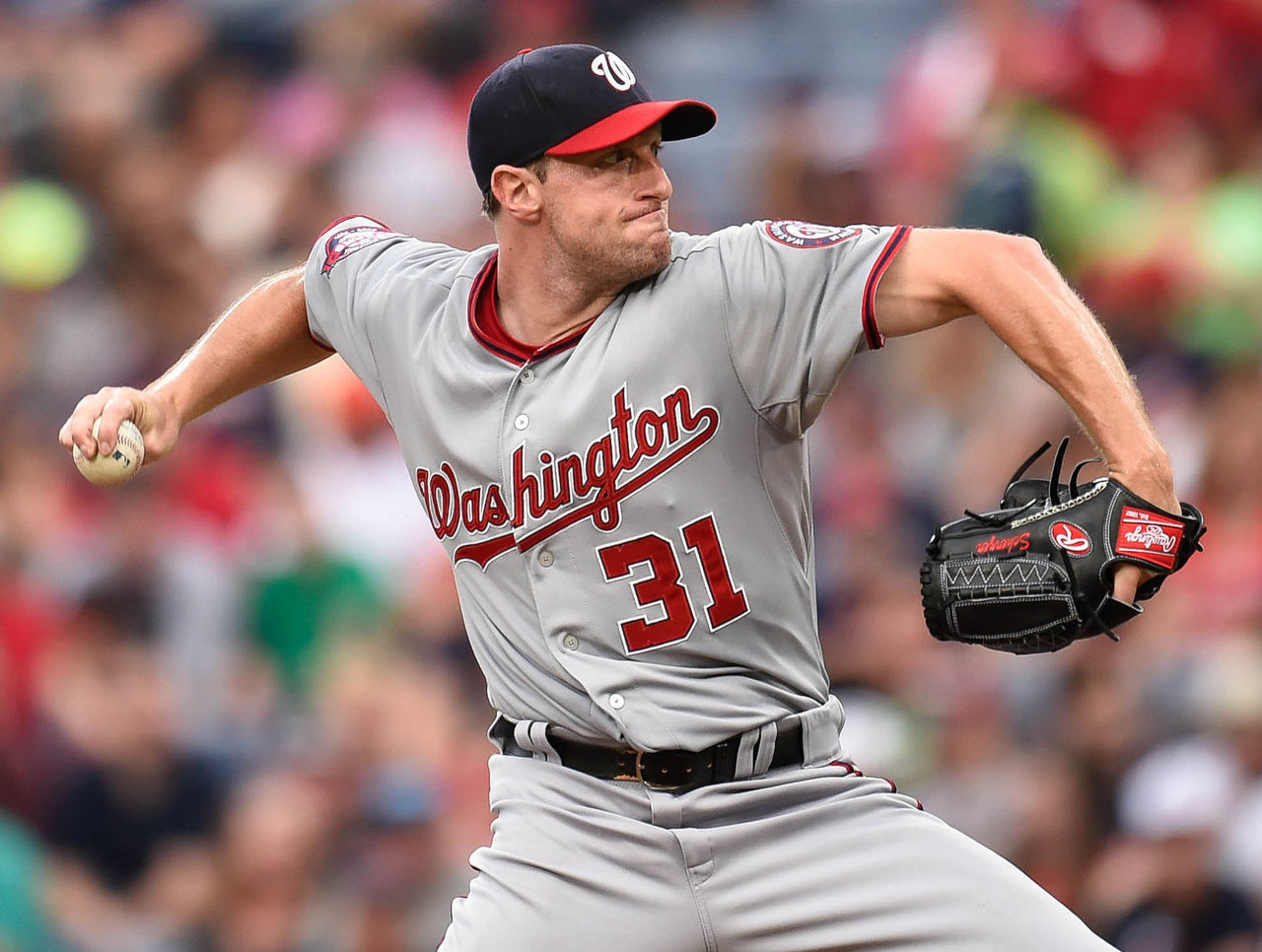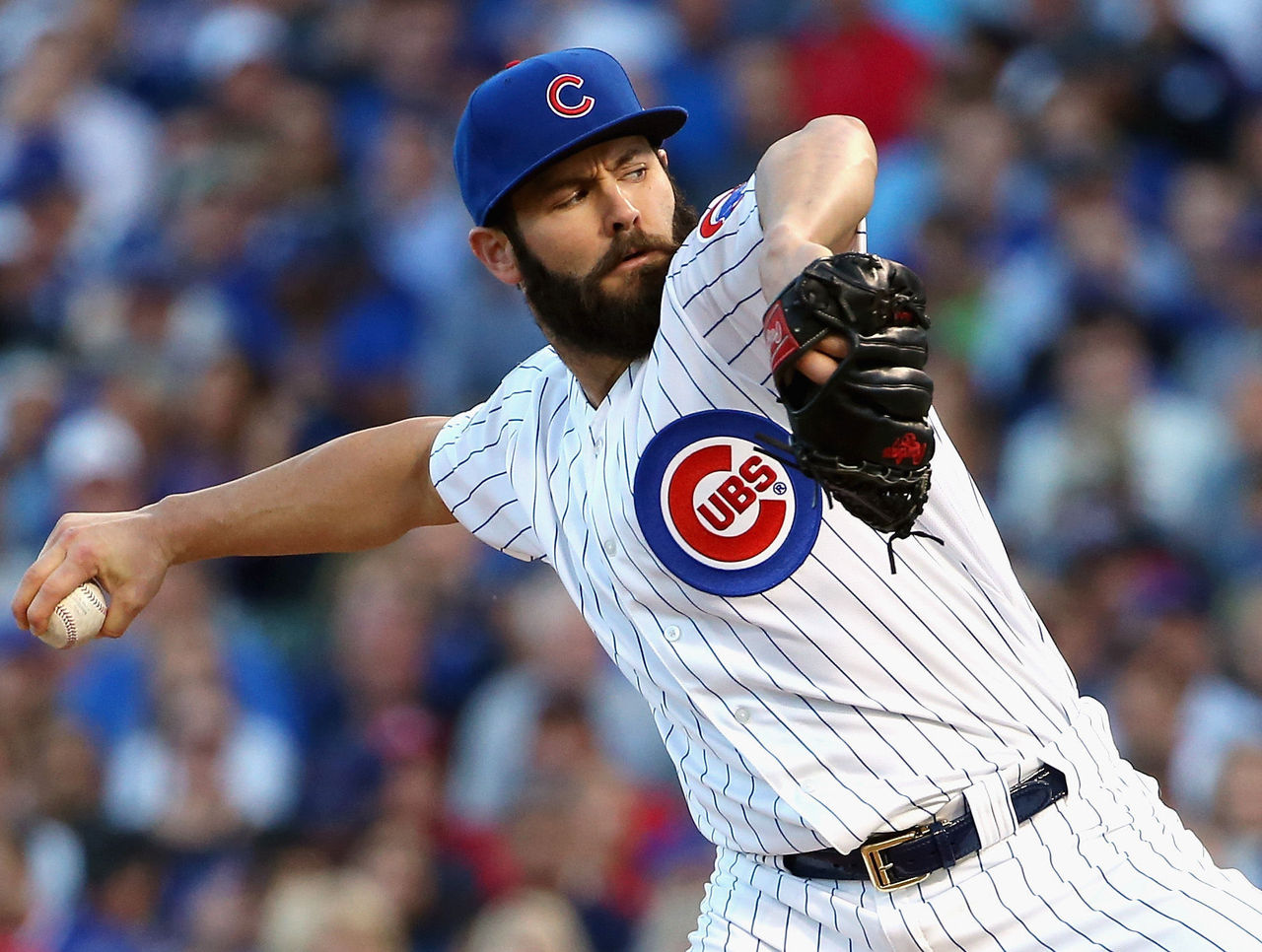Do NL Pitchers Really Benefit in Fantasy?
The general consensus from the average baseball fan is that National League pitchers benefit more than American League pitchers in fantasy. One of the major reasons why: NL pitchers get to face their opposing pitcher (or a parade of pinch hitters) rather than designated hitters.
The numbers below justify just how much more productive DHs are compared to pinch hitters and pitchers:
| Year | AL DH OPS | NL P OPS | NL PH OPS |
|---|---|---|---|
| 2015 | .769 | .331 | .618 |
| 2014 | .744 | .312 | .605 |
| 2013 | .726 | .341 | .622 |
| 2012 | .758 | .330 | .655 |
| 2011 | .770 | .361 | .603 |
| 2010 | .758 | .353 | .641 |
The average OPS of NL pitchers and NL pinch hitters since 2010 is .541. The average OPS of DHs in the same span is .754. The difference is significant enough that fantasy owners need to consider it come draft time.

The less obvious reason why NL pitchers have an advantage is that AL ballparks are generally smaller - specifically those in the AL East.
According to ESPN MLB Park Factors, NL ballparks scored a 1.001 average park factor when it came to scoring runs in 2015. AL ballparks, on the other hand, scored a 1.007 average park factor for scoring runs last season. A rate higher than 1.000 favors the hitter, while a rate below 1.000 favors the pitcher. Here's a look at the numbers over the years:
| Year | AL Park Factor | NL Park Factor |
|---|---|---|
| 2015 | 1.007 | 1.001 |
| 2014 | 0.997 | 1.005 |
| 2013 | 1.015 | 0.991 |
| 2012 | 1.005 | 1.011 |
| 2011 | 1.024 | 0.979 |
| 2010 | 0.999 | 1.012 |
| Average | 1.007 | 0.998 |
The numbers vary over each season, but since 2010, NL ballparks, on average, have been more pitcher-friendly. The gap would be a lot larger if it weren't for the Colorado Rockies' home ballpark, Coors Field, which has an average Park Factor of 1.416 since 2010 - the most of any MLB stadium by far.
But does any of this actually lead to better stats for NL pitchers in fantasy? Here are the average ERA and WHIP marks for pitchers in both leagues since 2010.
| Year | AL ERA | NL ERA | AL WHIP | NL WHIP |
|---|---|---|---|---|
| 2015 | 4.01 | 3.90 | 1.29 | 1.29 |
| 2014 | 3.81 | 3.66 | 1.28 | 1.26 |
| 2013 | 3.81 | 3.73 | 1.31 | 1.28 |
| 2012 | 4.08 | 3.94 | 1.30 | 1.31 |
| 2011 | 4.08 | 3.81 | 1.32 | 1.30 |
| 2010 | 4.14 | 4.02 | 1.34 | 1.34 |
NL pitchers have posted lower ERAs than their AL counterparts every season since 2010, and have led or tied in WHIP every season but one over that span.
While ERA and WHIP are nice stats, the crown jewel of all fantasy baseball pitching stats is the strikeout. Plenty of starters can log innings, win games and post respectable ERAs, but the ones who rack up 200-plus strikeouts are coveted by fantasy owners - and taken at the top of drafts. SO/9 is a stat that measures strikeouts per nine innings pitched:
| Year | AL SO/9 | NL SO/9 |
|---|---|---|
| 2015 | 7.6 | 7.9 |
| 2014 | 7.7 | 7.8 |
| 2013 | 7.7 | 7.5 |
| 2012 | 7.4 | 7.7 |
| 2011 | 6.9 | 7.3 |
| 2010 | 6.8 | 7.4 |
Aside from 2013, the NL has recorded a higher SO/9 rate every season since 2010. Over the past six years, the NL SO/9 rate has been 0.25 points higher than the AL's; that can mean the difference between 190 and 200 strikeouts over the course of an individual season.

Many notable pitchers have been significantly more successful pitching in the NL compared to the AL. Two pitchers come to mind that have recently made the transition to the National League - Max Scherzer and Jon Lester.
| Pitcher | AL ERA | NL ERA | AL SO/9 | NL SO/9 |
|---|---|---|---|---|
| Scherzer | 3.52 | 3.32 | 9.6 | 10.2 |
| Lester | 3.58 | 3.34 | 8.2 | 9.1 |
Lester isn't necessarily the best example, given that he had spent his entire nine-year career in the American League with Boston and Oakland before joining the Chicago Cubs last season.
Scherzer, on the other hand, spent the first two seasons of his career in Arizona, followed by five years in Detroit, before joining the Washington Nationals last season. This gives perspective from both ends of the spectrum in his career.
There are also multiple cases of pitchers being lights out in the NL before being humbled by the AL's designated hitters and batter-friendly ballparks:
| Pitcher | AL ERA | NL ERA | AL SO/9 | NL SO/9 |
|---|---|---|---|---|
| Jake Peavy | 4.13 | 3.25 | 7.7 | 8.7 |
| R.A. Dickey | 3.95 | 2.95 | 6.5 | 6.8 |
Peavy spent his prime years in San Diego's pitcher's paradise before heading to the White Sox, so his numbers need to be taken with a grain of salt. Keep in mind, however, that he has rejuvenated his career the past two seasons pitching at AT&T Park in San Francisco, also a pitcher-friendly stadium. He has posted a 2.99 ERA as a member of the Giants.
Dickey's numbers only include his three years with the New York Mets from 2010-2012 and his three seasons with the Toronto Blue Jays from 2013-2015. These are the only successful seasons of his career and the only years where he was a full-time starting pitcher.

The one knock that might be made against NL pitchers is that they don't go deep into games. It's assumed that because NL pitchers get pinch hit for in almost every start, they lose precious innings pitched numbers in fantasy. IP/GS = innings pitched per games started:
| Year | AL IP/GS | NL IP/GS |
|---|---|---|
| 2015 | 5.8 | 5.8 |
| 2014 | 5.9 | 6 |
| 2013 | 5.9 | 5.9 |
| 2012 | 5.9 | 5.9 |
| 2011 | 6.1 | 6 |
| 2010 | 6.1 | 5.9 |
The numbers are virtually the same, with AL pitchers getting the slight edge, though since 2012, things have been either even or in the NL's favor.
NL pitchers have been much more consistent and effective in their starts. QS% is a stat that measures what percent of starts were considered quality starts. To record a quality start, a pitcher must pitch at least six innings and allow three earned runs or fewer.
| Year | AL QS% | NL QS% |
|---|---|---|
| 2015 | 50 | 50 |
| 2014 | 51 | 57 |
| 2013 | 51 | 54 |
| 2012 | 50 | 52 |
| 2011 | 53 | 54 |
| 2010 | 53 | 53 |
NL pitchers have been much more reliable when it comes to recording quality starts. This is critical in head-to-head fantasy leagues; you can have much more faith starting an NL pitcher over an AL pitcher on a Sunday in order to maintain your team ERA and WHIP before the end of the week.

It's clear that NL pitchers have the statistical advantage, which results in better fantasy value. You shouldn't completely avoid AL pitchers, but consider the league a possible tiebreaker when deciding between two pitchers close in the rankings - like Sonny Gray and Gerrit Cole, for example.
A great way to find steals or bounce-back players in fantasy drafts is by targeting pitchers who were acquired by an NL team after spending time in the AL. Depending on the ballpark, there's a strong chance the pitcher's numbers will be better in the NL.
For this season, pitchers who joined an NL team in the offseason after being in the AL include Jeff Samardzija, Johnny Cueto, Scott Kazmir and Wei-Yin Chen. Drafting one or more of these pitchers could have the makings of a steal, as their numbers are bound to be better in the NL.
Pitchers making the reverse transition who might be best to avoid include Jordan Zimmermann, Ian Kennedy and Doug Fister.